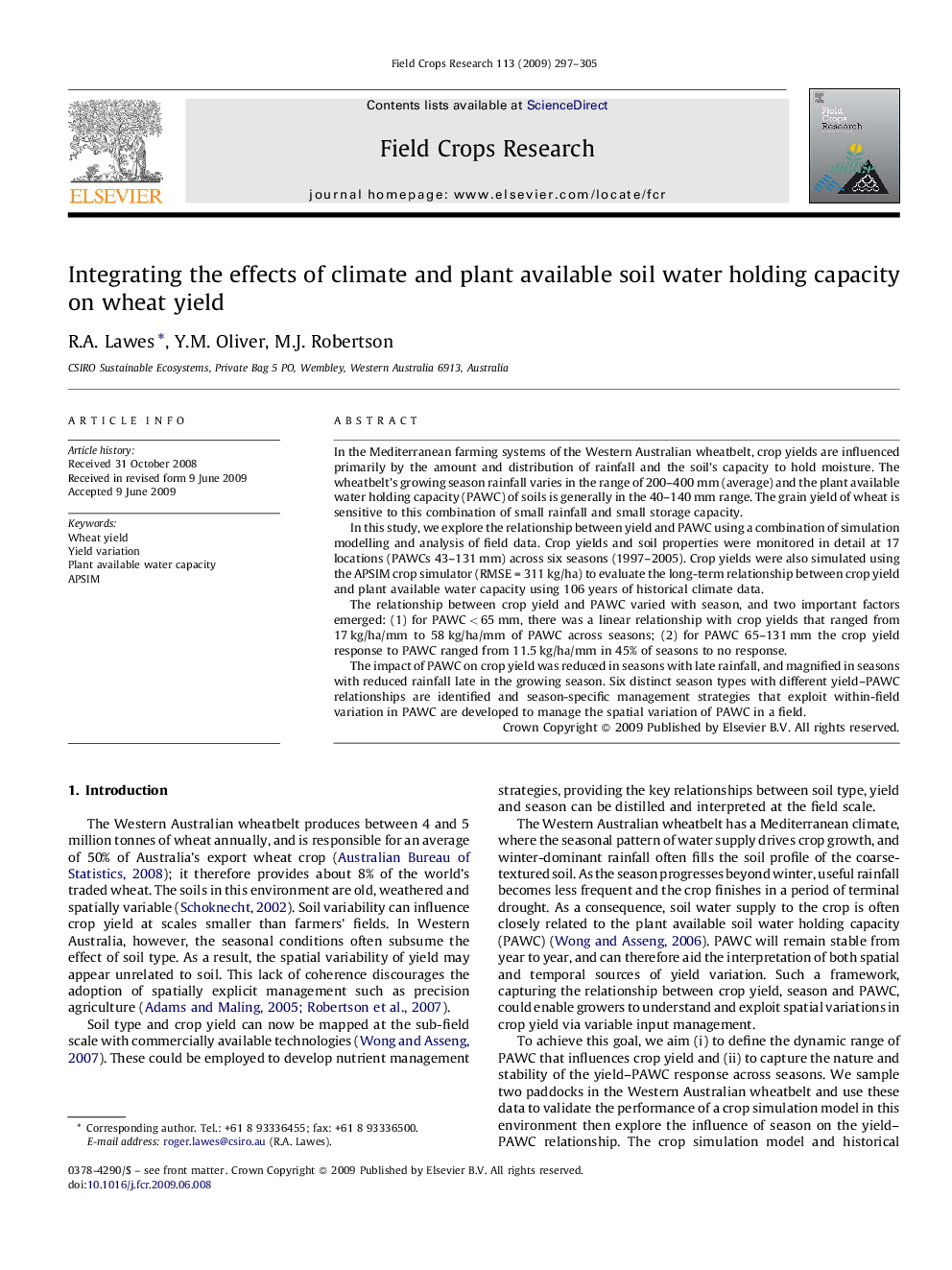| Article ID | Journal | Published Year | Pages | File Type |
|---|---|---|---|---|
| 4511080 | Field Crops Research | 2009 | 9 Pages |
In the Mediterranean farming systems of the Western Australian wheatbelt, crop yields are influenced primarily by the amount and distribution of rainfall and the soil's capacity to hold moisture. The wheatbelt's growing season rainfall varies in the range of 200–400 mm (average) and the plant available water holding capacity (PAWC) of soils is generally in the 40–140 mm range. The grain yield of wheat is sensitive to this combination of small rainfall and small storage capacity.In this study, we explore the relationship between yield and PAWC using a combination of simulation modelling and analysis of field data. Crop yields and soil properties were monitored in detail at 17 locations (PAWCs 43–131 mm) across six seasons (1997–2005). Crop yields were also simulated using the APSIM crop simulator (RMSE = 311 kg/ha) to evaluate the long-term relationship between crop yield and plant available water capacity using 106 years of historical climate data.The relationship between crop yield and PAWC varied with season, and two important factors emerged: (1) for PAWC < 65 mm, there was a linear relationship with crop yields that ranged from 17 kg/ha/mm to 58 kg/ha/mm of PAWC across seasons; (2) for PAWC 65–131 mm the crop yield response to PAWC ranged from 11.5 kg/ha/mm in 45% of seasons to no response.The impact of PAWC on crop yield was reduced in seasons with late rainfall, and magnified in seasons with reduced rainfall late in the growing season. Six distinct season types with different yield–PAWC relationships are identified and season-specific management strategies that exploit within-field variation in PAWC are developed to manage the spatial variation of PAWC in a field.
